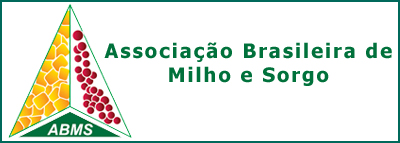NUTRIENT REMOVAL BY OFF-SEASON GRAIN SORGHUM AS AFFECTED BY INTERCROPPING WITH RUZIGRASS AND FERTILIZATION LEVELS IN THE BRAZILIAN CERRADO
DOI:
https://doi.org/10.18512/10.18512/rbms2022v21e1282Resumo
Sorghum is an off-season crop option in succession to soybean in the Cerrado region, but many producers underestimate the fertilization requirement, which can harm the productive performance of the system as a whole. The objective of this study was to quantify the uptake and removal of nutrients by grain sorghum in monocropping or intercropping with ruzigrass (Urochloa ruziziensis), with three levels of NPK fertilization (control without fertilization; replacement fertilization; and replacement + 30%) in a soil with built-up fertility. The experimental design was randomized blocks with four replicates. Sorghum plants were sampled at 33, 67, and 130 days after sowing, corresponding to eight-leaf stage, flowering, and physiological maturity. Nutrient accumulation throughout the sorghum cycle and the respective uptake and removal rates were assessed. Intercropping with ruzigrass in soil with builtup fertility reduces grain yield but does not influence the accumulation of most nutrients by sorghum. Fertilization increases sorghum biomass and nutrient accumulation even under high-fertility conditions, but without impact on grain yield. In off-season sorghum crops, nutrient uptake occurs essentially during the vegetative stages. Each ton of grain produced removes the equivalent of 14.5, 5.0, 3.5, 1.1, and 0.5 kg of N, P2 O5 , K2 O, Mg, and S, in addition to 2, 2, 25, 9, and 11 g of B, Cu, Fe, Mn, and Zn, respectively. The potential for soil nutrient depletion by grain sorghum is comparable to the patterns of off-season maize, highlighting the need for sufficient fertilization to replace the withdrawal by harvesting.
Downloads
Publicado
Como Citar
Edição
Seção
Licença
Autores que publicam nesta revista concordam com os seguintes termos:- Autores mantém os direitos autorais e concedem à revista o direito de primeira publicação, com o trabalho simultaneamente licenciado sob a Creative Commons Attribution License que permitindo o compartilhamento do trabalho com reconhecimento da autoria do trabalho e publicação inicial nesta revista.
- Autores têm autorização para assumir contratos adicionais separadamente, para distribuição não-exclusiva da versão do trabalho publicada nesta revista (ex.: publicar em repositório institucional ou como capítulo de livro), com reconhecimento de autoria e publicação inicial nesta revista.
- Autores têm permissão e são estimulados a publicar e distribuir seu trabalho online (ex.: em repositórios institucionais ou na sua página pessoal) a qualquer ponto antes ou durante o processo editorial, já que isso pode gerar alterações produtivas, bem como aumentar o impacto e a citação do trabalho publicado



